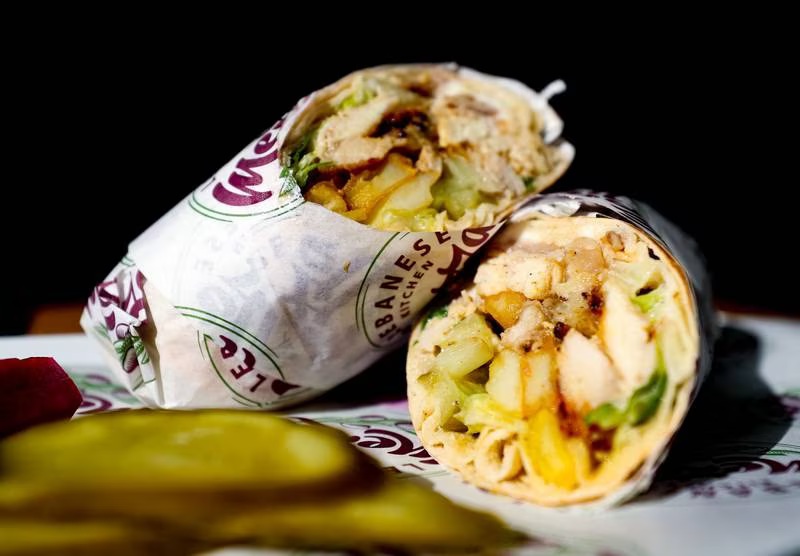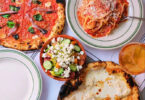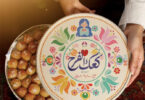Saeed Saeed
DUBAI : Living in the UAE can be an adventure of sights, sounds, smells and tastes.
They’re attributes that converge in the nation’s countless street food outlets, with many other traditional ingredients also making their way into high-end establishments.
Here are 11 dishes to try.
1. Shawarma
Arguably the most popular street food dish in the UAE, the sandwich is often a conversation starter, with spirited debates ranging from which outlet makes the best to whether the chicken version trumps the beef.
Each protein of choice comes with its own accompaniments, too.
Chicken shawarma typically has pickled cucumber and turnip, garlic paste (toum) and chips, while the lamb and beef versions are paired with tahini (ground sesame) paste, onions and tomatoes.
Pro tip: ask nicely and the chef might oblige and add extra meat or sauce to your sandwich.
2. Koshari
:quality(70)/cloudfront-eu-central-1.images.arcpublishing.com/thenational/YKPOJUTYI3KEFCRUOYIC7ZKMGA.jpg)
An Egyptian staple, this dish is a riot of textures and flavours.
The traditional koshari is a bowl of macaroni pasta, spaghetti, lentils and rice, topped with a generous amount of fried onions and hot tomato sauce.
For an extra kick, ask for a drizzle of vinegar and chilli sauce.
Where once it was only available in Egyptian fast-food venues, plenty of restaurants across the UAE – such as Abu Dhabi’s Koshari Factory and Dubai’s Koshary Abutarek – now specialise in the popular dish.
3. Hummus
There is fresh hummus and then there is the canned variety available in supermarkets. It is a distinction exposed when moving to the UAE.
The dip – a blend of chickpeas with tahini, garlic and citrus – is ubiquitous and can be served with anything from meat and chicken platters to falafel sandwiches. Flavoured versions – from beetroot to honey jalapeno – are also widely available.
When made from scratch, it exudes a silky texture and tangy taste. In comparison, the canned version can be alarmingly grainy and flavourless.
4. Chips Oman sandwich
Named after the popular crisps from Oman, crunchy and mildly spiced Chips Oman sandwich has become a treat of its own thanks to UAE street food vendors.
Placing cheese spread, hot sauce and crushed pieces of Chips Oman within a fluffy parotta is something of a UAE classic, found in cafeterias across the country.
A Chips Oman sandwich can also include an omelette or a salad for extra crunch.
The crisps are also used in maki rolls, regag and popcorn.
5. Karak chai
:quality(70)/cloudfront-eu-central-1.images.arcpublishing.com/thenational/563HSI3P5CRTPIYHIREUHRXMXQ.jpg)
A good karak cafeteria can be identified by the long lines of cars outside it.
Ideal for all seasons and any time of day, the hot chai follows a simple formula: loose tea leaves brewed with spices, before being brought to a boil and simmered with evaporated milk.
Karak chai vendors differentiate themselves by the “secret spices” they use (often including cardamom, ginger fennel and cloves) and the length of brewing time.
Some cafeterias now serve karak with fresh milk, but it’s best to stick to the original recipe if you want that authentic sweet taste.
6. Fruit mocktails
Fancy a fresh glass of the Terminator or the Anti-Virus Juice?
These are but two of the many quirky names assigned to the medley of fresh fruit mocktails served at independent juice bars across the Emirates. Flavour combinations include: strawberry, mango and avocado; banana, cinnamon and hazelnut; and pears with cucumber.
While many drinks are made fresh on site, menus often also include standard items such as orange, pomegranate and avocado juices.
7. Indian chaat
:quality(70)/cloudfront-eu-central-1.images.arcpublishing.com/thenational/3CYMKIW55FFQ7BZ774TMAGAJRE.jpg)
An umbrella term for a rich Indian culinary tradition, chaat is a range of street dishes of fried dough, puffed rice, boiled potatoes, and sweet and tangy chutneys.
Popular chaat items available in Indian UAE restaurants and cafeterias include pani puri – a small and hollow puff of bread filled with chickpeas, potato chunks and sweet or spicy chutney; dahi vada – fried lentil balls soaked with thick yoghurt and topped with spices such as cumin and coriander; and bhel – puffed rice and sev with potato, peanuts and crunchy puri.
8. Camel products
From coffee and chocolates to burgers, camel products have come into their own in recent years, going from a local curiosity to a cuisine of its own.
Drinks and dishes featuring camel products can now be found in glamorous hotels – such as the camelccino at Emirates Palace Mandarin Oriental in Abu Dhabi; and camel burgers, steaks and biryanis at Dubai’s Local House. It’s not exactly traditional street food, but it champions local recipes in the same way, only with an elevated twist.
While they may not be everyone’s cup of tea, these dishes are part of the fabric of the UAE’s own culinary culture and merit a taste if you live or visit here.
9. Dampa
As the name suggests, the Filipino street food staple dumps a kilo or half-kilo of freshly caught prawn, crab, mussels and clams on a sharing table with rice and sauces of your choosing.
Dampa is an experience best shared with family and friends, and don’t be afraid to dig in using your hands.
10. Lamb ouzi
The lavish Levant dish comprises a whole roast lamb served on a bed of aromatic rice. Aside from cinnamon, nutmeg, cloves and cardamom, the dish benefits from the Emirati allspice blend.
It is often the centrepiece of hotel buffets, especially during Ramadan, and is also served during weekends in many Syrian and Lebanese restaurants.
11. Umm Ali
:quality(70)/cloudfront-eu-central-1.images.arcpublishing.com/thenational/GFAELZVTSNCJ7FQI7ZRJQOY4DI.jpg)
The finish line of many hotel buffets, Umm Ali is one of the region’s most popular desserts.
Meaning “mother of Ali,” and originating in Egypt, Umm Ali can be viewed as the Arab world’s twist on the creamy bread-and-butter pudding with a history dating back to the Mamluk sultans of the 13th century.
Courtesy: thenationalnews







